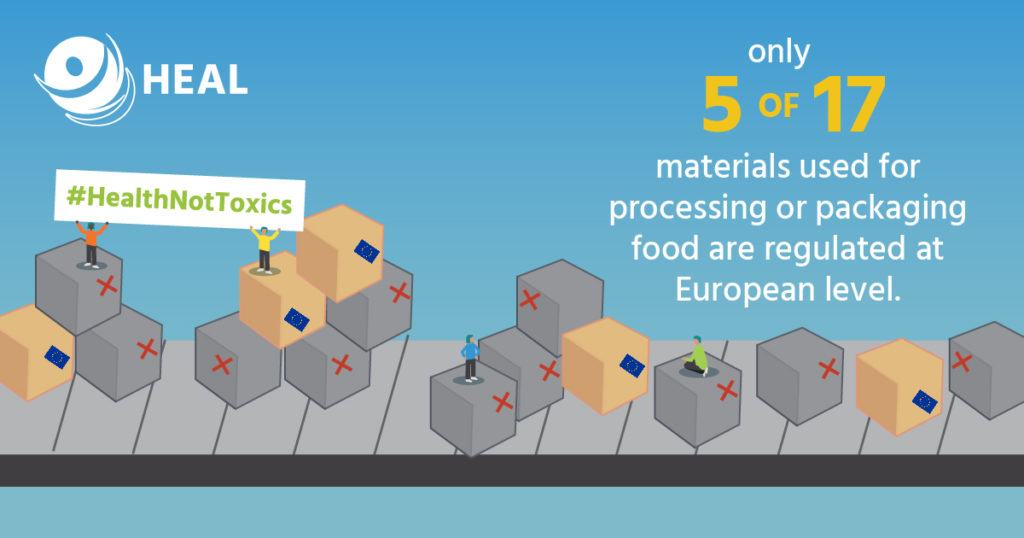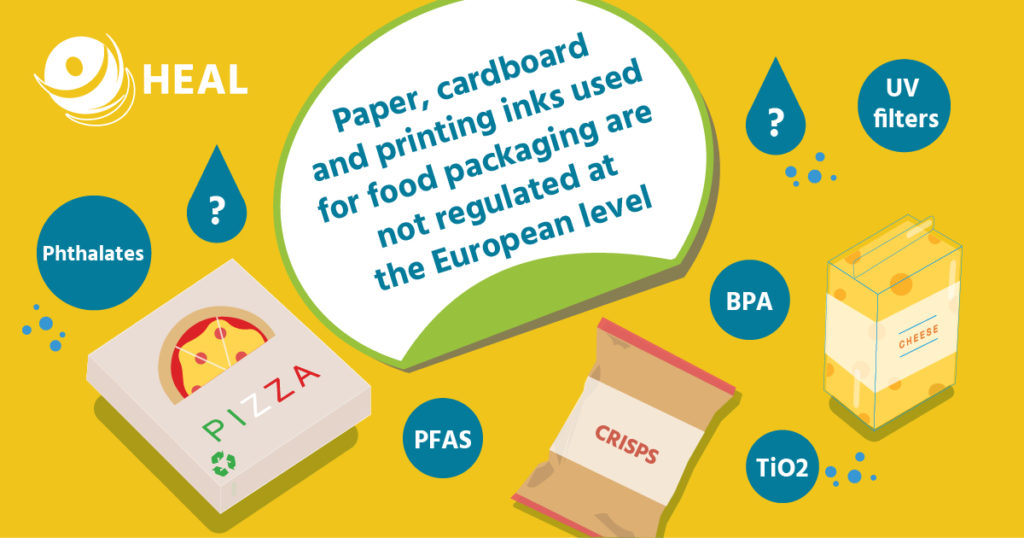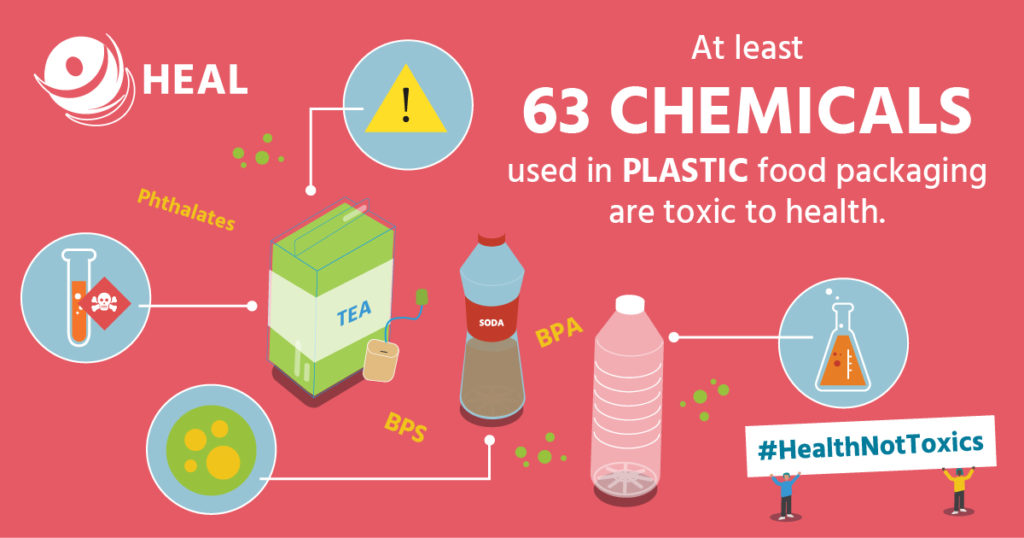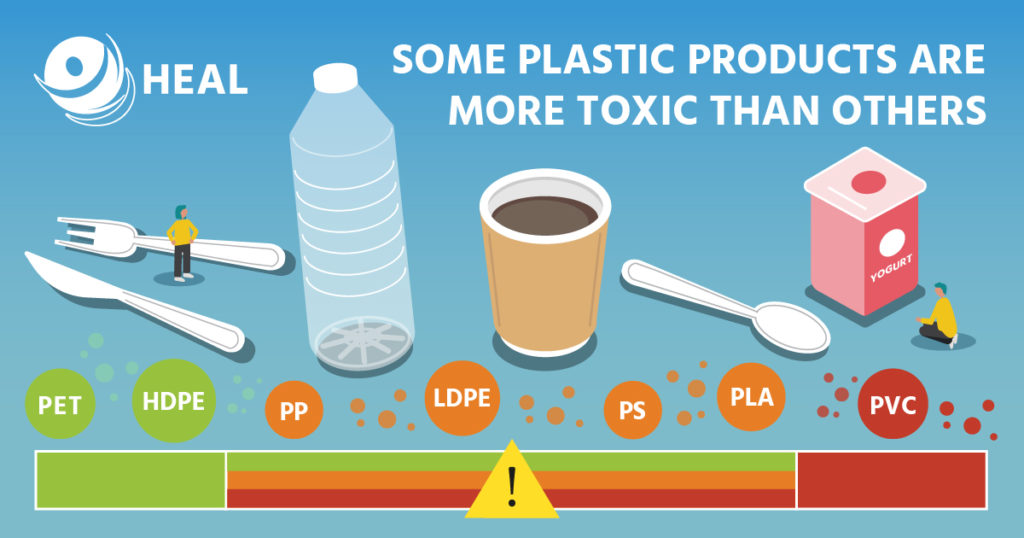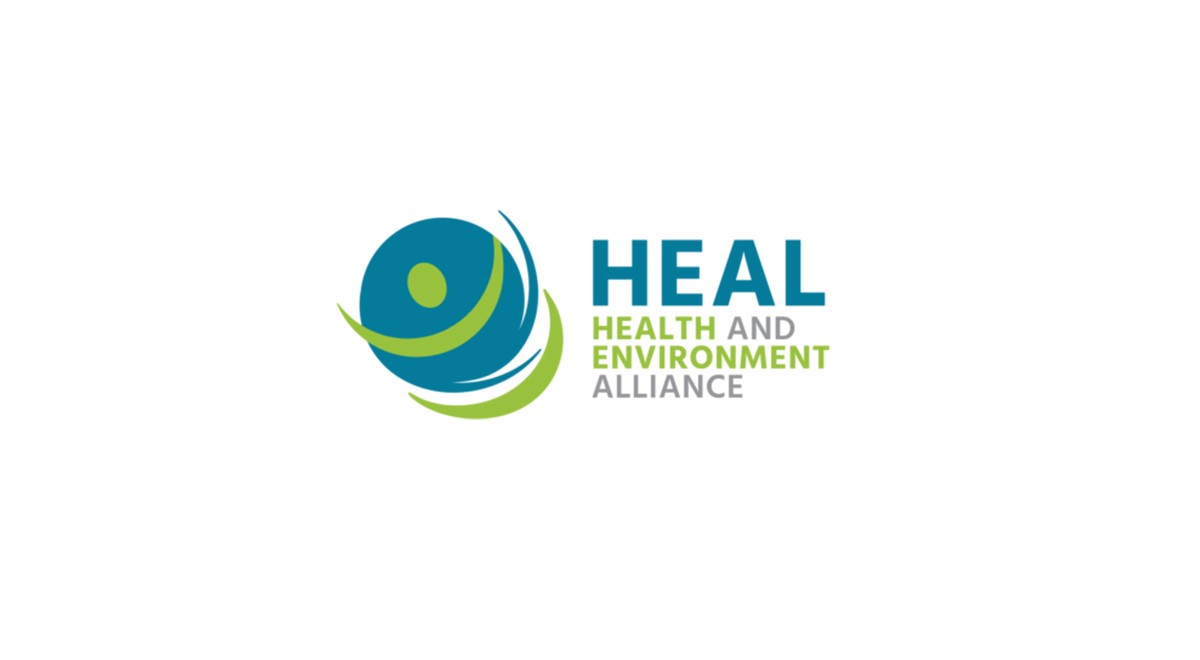Are you our new Communications Officer?
Nobody should ever have to worry about toxic substances making their way into our food. Yet, if you ask around, most consumers have no idea about the composition of the packaging wrapping their food and drinks, and how this might affect them. Current loopholes in the European legislation on food contact materials have as a result that its objective to provide a high level of protection for health cannot be reached.
Have you ever wondered whether harmful chemicals are present in the plastic wrappers around the meat and cheese you buy in your local supermarket? Or whether it is safer to buy your yogurt in a plastic pot or in a glass jar with a plastic lid? Well, most people don’t know. And the reason for that is that there are thousands of chemicals in the materials coming into contact with our food through packaging.
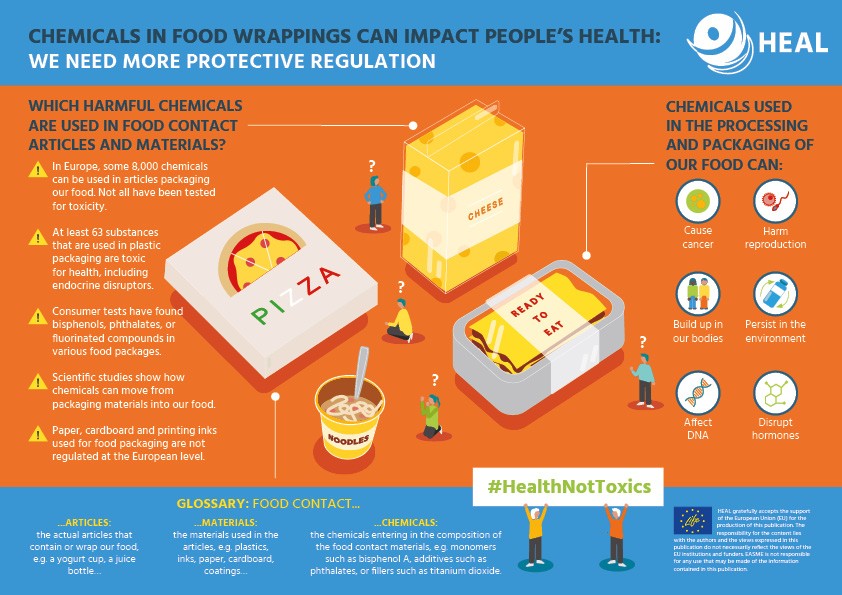 Our infographic is available for download in English (pdf and jpeg), French (pdf and jpeg), Spanish (pdf and jpeg) and German (pdf and jpeg).
Our infographic is available for download in English (pdf and jpeg), French (pdf and jpeg), Spanish (pdf and jpeg) and German (pdf and jpeg).
Loopholes in European legislation on food contact materials
The European regulation on food contact materials has been in place since 1976. It has severe loopholes that explain why potentially hazardous substances make their way into our food through leaching or migration and then into our bodies, with potential health effects over the long-term.
Some of the most concerning loopholes that HEAL has been calling for action on include:
- Many chemicals are not assessed for safety by public authorities. This includes so-called non-intentionally added substances (NIAS), that are present as impurities or by-products of manufacturing processes.
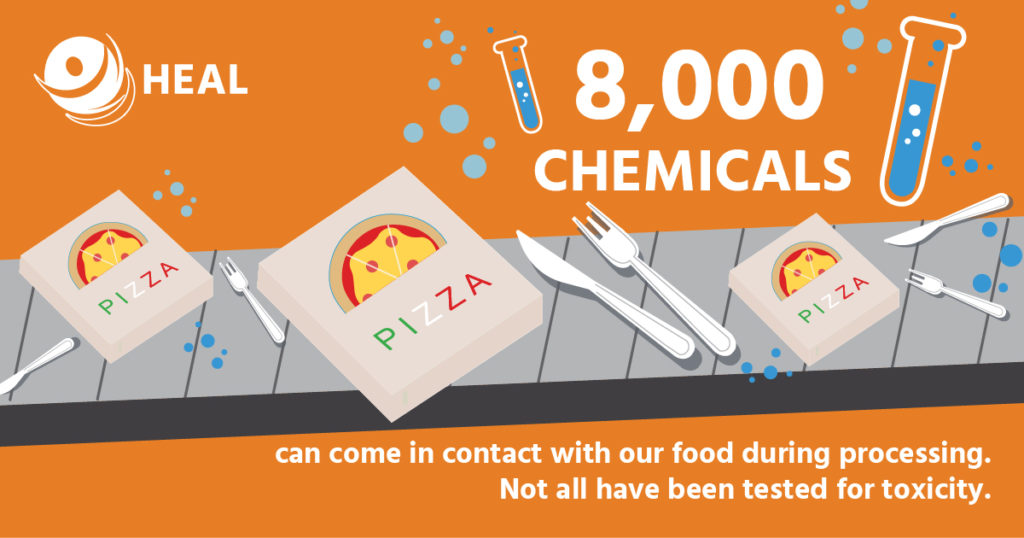
- Numerous chemicals harmful to human health are overlooked, including substances identified as of very high concern (SVHC) under the REACH legislation.
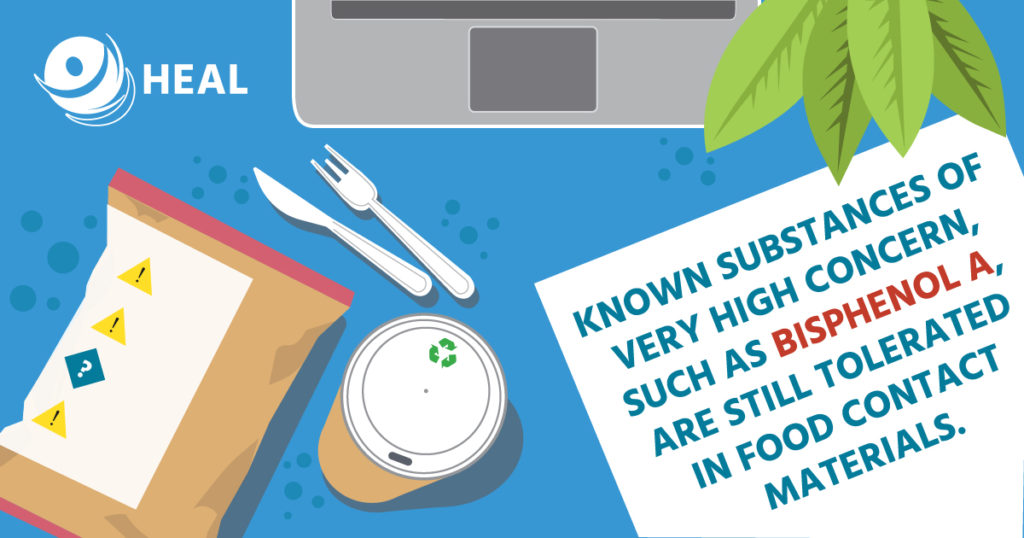
- Endocrine disrupting chemicals (also known as hormone disruptors or EDCs) are not addressed at all.
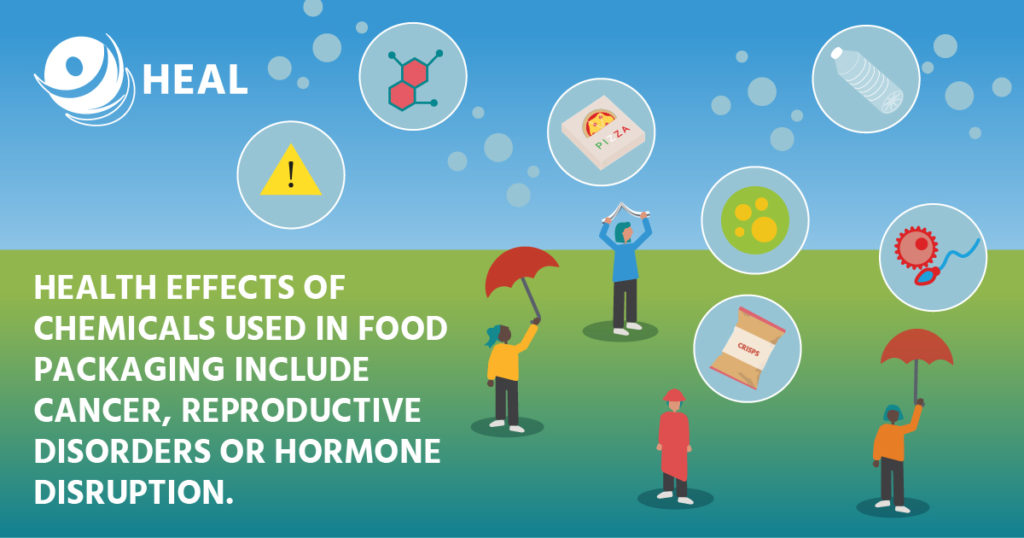
- The real-life exposure conditions to chemicals as well as the additive effects between the various chemicals used in one single food package are overlooked in the current risk assessment process.
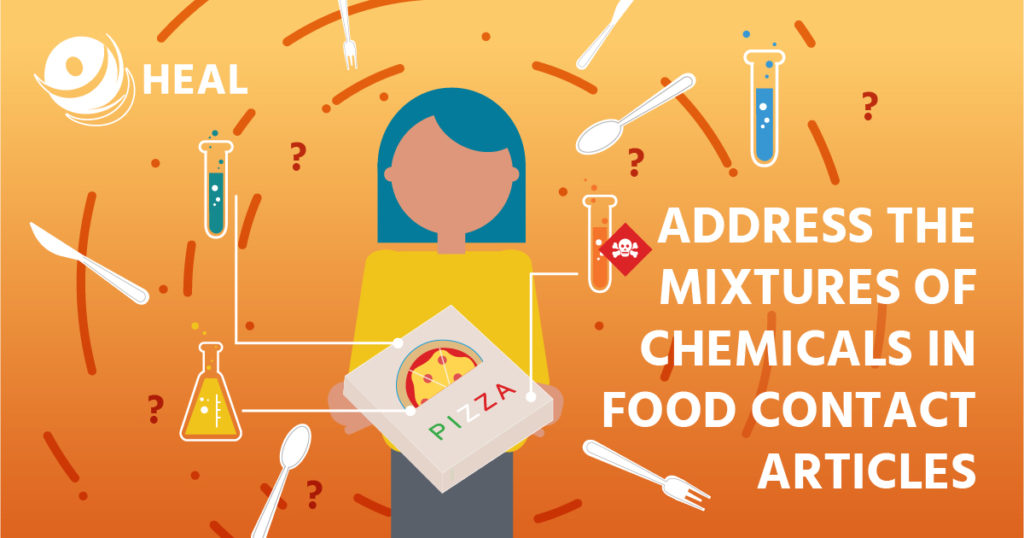
- Most materials currently used for food packaging are not covered by the current regulation. Only five materials are covered: these are ceramics, regenerated cellulose film, active and intelligent materials, plastics, recycled plastics. Widely used materials such as paper and boards are overlooked.
- While plastics are covered in current legislation, health loopholes remain.
- Recycled materials are not assessed for their adverse health effects.
- The current regulatory process for food contact materials is not transparent enough and suffers from an unbalanced stakeholder access, with limited access for civil society groups.
- By not being aligned with the EU’s REACH regulation, the regulation on food contact materials is not delivering on the better regulation objectives set by the European Commission itself.
The good news is that the European Commission has committed to revise its outdated legislation by 2022 as part of the European Green Deal and its flagship Chemicals Strategy for Sustainability.
HEAL, together with its members, is dedicated to creating a toxic-free environment where nobody should have to worry about the presence of toxic chemicals in their food and products and their effects on our health.
Together with other NGOs, we support calls for new EU-wide legislation on food contact materials, based on the following five key principles:
- A high level of protection of human health
- Thorough assessment of chemicals in materials and final articles
- Effective enforcement
- A clean circular economy based on non-toxic material cycles
- Transparency and participation
Read this next to find out more about food contact materials and chemical contamination:
- HEAL reports:
- Food contact materials and chemical contamination (First published in 2016 and updated in May 2019)
- HEAL’s vision for Europe leading the way towards a non-toxic environment, available in English, Dutch and French (June 2018)
- Other HEAL resources:
- Infographic: ‘Harmful chemicals in food packaging hamper the circular economy’, launched by HEAL, Zero Waste Europe, CHEM Trust and ClientEarth (September 2021).
- Infographic: ‘Harmful chemicals in food packaging are putting are health at risk’, launched by HEAL, Zero Waste Europe, the European Consumer Organisation BEUC, CHEM Trust and ClientEarth (June 2020).
- To illustrate how chemicals in food wrappings can impact people’s health, HEAL developed an infographic (available in English, German, French and Spanish*) and a set of fact cards (in English, German, French, Czech and Spanish*), available for download.We thank WECF France, ARNIKA, and Fundación Alborada for supporting the translations into French, Czech and Spanish.
- Many chapters of our report ‘Turning the Plastic Tide‘ are also available as stand-alone factsheets:
- A spotlight on bisphenols
- A spotlight on endocrine disrupting chemicals (EDCs)
- A spotlight on flame retardants
- A spotlight on microplastics
- A spotlight on our historical plastic burden
- A spotlight on phthalates
- A spotlight on polyfluorinated and perfluorinated compounds (PFAS)
- A spotlight on PVC: an especially problematic plastic
- A spotlight on unregulated polymers
- Infographic: Human and environmental health impacts of the plastic lifecycle
- Infographic: The typical chemical lifecycle of plastics
- Infographic: What are plastics?
- Table 1: Common plastic polymers and their associated monomers
- Table 2: Typical plastics compromising common consumer products
- Table 3: Categories of additives and typical examples
- Many chapters of our report ‘Turning the Plastic Tide‘ are also available as stand-alone factsheets:
- To bring you the latest news and science on food contact materials, HEAL has joined up with CHEM Trust and Zero Waste Europe to produce a monthly ‘Food for Thought’ newsletter. Click here to read the May 2020 edition, and subscribe today.
- Listen to the presentation given by Natacha Cingotti, HEAL’s senior policy officer on chemicals and health, during the 2020 Food Packaging Forum annual workshop.
- HEAL’s press statements, letters and opinion pieces:
- Opinion piece: ‘Turning the plastic tide – how upgraded chemicals regulations are piece and parcel of addressing the plastics challenge’ (originally posted in the European Chemicals Agency’s Guest Corner, October 2020)
- Europeans will remain exposed to BPA in food packaging (January 2018)
- HEAL also regularly showcases the latest science on chemicals used in food contact materials and their related potential health impacts:
- HEAL is part of the EDC Strategies Partnership, a monthly webinar series co-chaired by the Commonweal Biomonitoring Resource Center, Commonweal Healthy Environment and Endocrine Disruptor Strategies (HEEDS), the Health and Environment Alliance (HEAL) and the Collaborative on Health and the Environment (CHE). Previous webinars on food contact materials and articles include:
- HEAL is part of several coalitions aiming to put a spotlight on food contact materials, chemicals and health:
- The EDC-Free Europe coalition is a coalition of public interest groups representing more than 70 environmental, health, women’s and consumer groups across Europe who share a concern about hormone disrupting chemicals (EDCs) and their impact on our health and wildlife. HEAL hosts the EDC-Free Europe campaign secretariat.
- The #BreakFreeFromPlastic movement is a global movement envisioning a future free from plastic pollution. Since its launch in 2016, more than 8,000 organizations and individual supporters from across the world have joined the movement to demand massive reductions in single-use plastics and to push for lasting solutions to the plastic pollution crisis.

